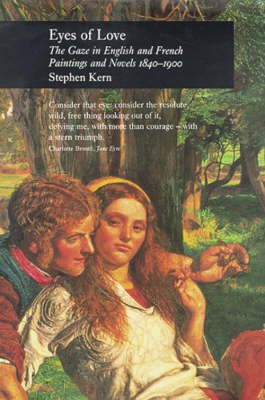PICTURING HISTORY
1 total work
In "King Cophetua and the Beggar Maid" Edward Burne-Jones shows the monarch in profile, looking up idolatrously at his beloved maiden. But she does not look down at him - she stares frontally, with wide-open hypnotic eyes. In Hardy's "Tess of the d'Urbervilles", Angel Clare gazes intently at Tess when preparing to propose. She looks away. This compositional pattern recurs frequently in English and French paintings and novels of the second half of the 19th century, in works by Rossetti and Renoir, Dickens and Zola, and numerous others. Stephen Kern identifies it in this book as a "propositional composition". A man in profile looks at a woman, who looks away from him and in the direction of the viewer. Kern aims to show how the frequency of the composition calls for a reconsideration of a widely held argument about "the gaze" - that women are merely passive erotic objects, while men are active erotic subjects. He argues that, compared with the eyes of men, the eyes of women are more visible, look out into a wider world, consider a more varied range of thoughts, and convey more profound, if not more intense, emotions.
